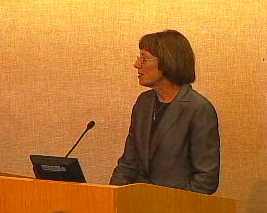
Proposed revenue-generating measures for several Santa Clara County schools fared well during California’s 2012 primary election Wednesday, something School Board Trustee Jaime Rosso finds “encouraging” as the Gilroy Unified School District waits on results from a voter survey that will gauge support for a possible joint city-school sales tax.
Whereas bond measures for West Valley-Mission Community College, Milpitas Unified, Mountain View Whisman and Cupertino Union school districts will go toward capital funding for facilities projects, GUSD’s proposed sales tax is a last-resort effort with critical aspirations. This includes staving off future program cuts, furlough days, class size increases and the additional shortening of the school year.
Taking care to acknowledge the difference between a parcel tax or school bond versus a sales tax increase, Rosso agreed it’s still “encouraging that people are supporting the schools… all we can do is present our case to the city, and then it’s up to the voters to decide if they feel that they want to support the needs of the schools.”
His thoughts echo an optimistic announcement released Wednesday by State Superintendent of Public Instruction Tom Torlakson, who declared that Tuesday’s election results show California voters “remain willing to invest in our schools.”
Torlakson hopes this “support” will carry through to the November ballot, when voters “will have the opportunity to restore some of what years of budget cuts have taken from California’s schools and students.”
Whether that support is strong enough to sway Gilroyans to vote in favor of joint city-school sales tax – which could yield up to $11.5 million annually depending on a 0.25, 0.50 or 1 percent local sales tax increase – remains to be seen.
Having contracted with San Francisco-based consulting firm TBWB Strategies, the Gilroy school board recently authorized a $24,000-$30,000 voter poll that will survey approximately 400 voters by phone over the course of two to three evenings. Rosso expects to have the results by the board’s next regular meeting June 14.
If City Council agrees to put the measure on the November ballot – the deadline is Aug. 10 – the sales tax requires 50 percent-plus-one majority vote, or a two-thirds vote, depending if the revenue is designated for “general use” or “specific use.”
Most recently, several trustees and district staff presented their case Monday evening to Gilroy City Council. Rosso said he and his colleagues were “very pleased” with how the presentation went.
One sticking point GUSD Superintendent Debbie Flores hammered on during the City Council meeting is that despite cutting $18 million from its budget over the last four years, GUSD continues to garner awards, recognitions and impressive growth in its Academic Performing Index.
“Why am I telling you about the performance of our schools?” she asked. “Many people come to a community and stay in a community because of the quality of the schools. One way to sell your city is through your schools and through the performance of your schools.”
On that note, the unfathomable $8.1 million cut in state funding if the governor’s temporary tax initiative doesn’t pass in November, has GUSD officials “losing sleep at night,” said Flores.
A quarter of GUSD’s funding comes from the state, she noted. When the district doesn’t receive the money, the impact is “devastating.”
“You can’t keep cutting each year after year and still see that kind of (academic) growth we’re experiencing,” Flores continued. “We feel like we’re at a turning point, and that’s why we’re here as a district.”
The next regular board of education meeting will be held at 7 p.m. Thursday, June 14 at district offices, located at 7810 Arroyo Circle in Gilroy.
• GUSD is faced with losing $2.9 million or $8.1 million in state funding in the 2012-2013 school year. This is contingent on whether voters pass Gov. Jerry Brown’s tax initiative in November 2012.
• Brown’s tax initiative would generate an estimated $8.5 billion through the budget year. It will temporarily increase the personal income tax on the state’s wealthiest taxpayers by up to 3 percent for seven years, and increase the sales tax by 0.25 percent for four years.
• Joint city/school sales tax: Could generate $2.8 million and up to $11.5 million annually depending on a 0.25, 0.50 or 1 percent local sales tax increase. Requires 50 percent plus one majority vote, or a two-thirds vote, depending if the revenue is designated for “general use” or “specific use.”
• If the district sees the effort through to the ballot box, putting a parcel tax before voters could cost $50,000 to $100,000.
• The deadline for City Council to place the measure on the November 2012 ballot is Aug. 10.
• GUSD authorized a $24,000 to $30,000 voter poll that will survey approximately 400 voters by phone. Results are expected by June 14.
• West Valley-Mission Community College District: Passes with 59.2 percent
• Milpitas Unified School District: Passes with 64.38 percent
• Mountain View Whisman School District: Passes with 66.64 percent
• Cupertino Union School District: Passes with 65.96 percent













